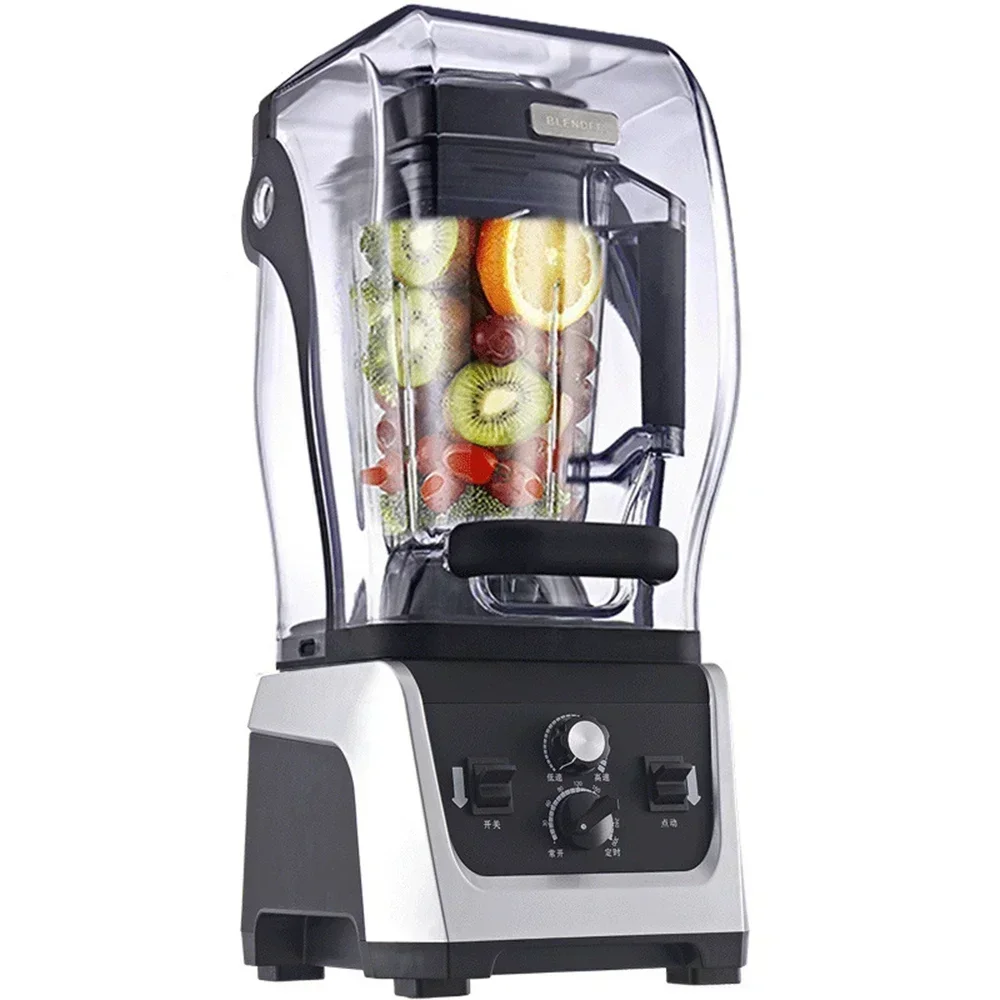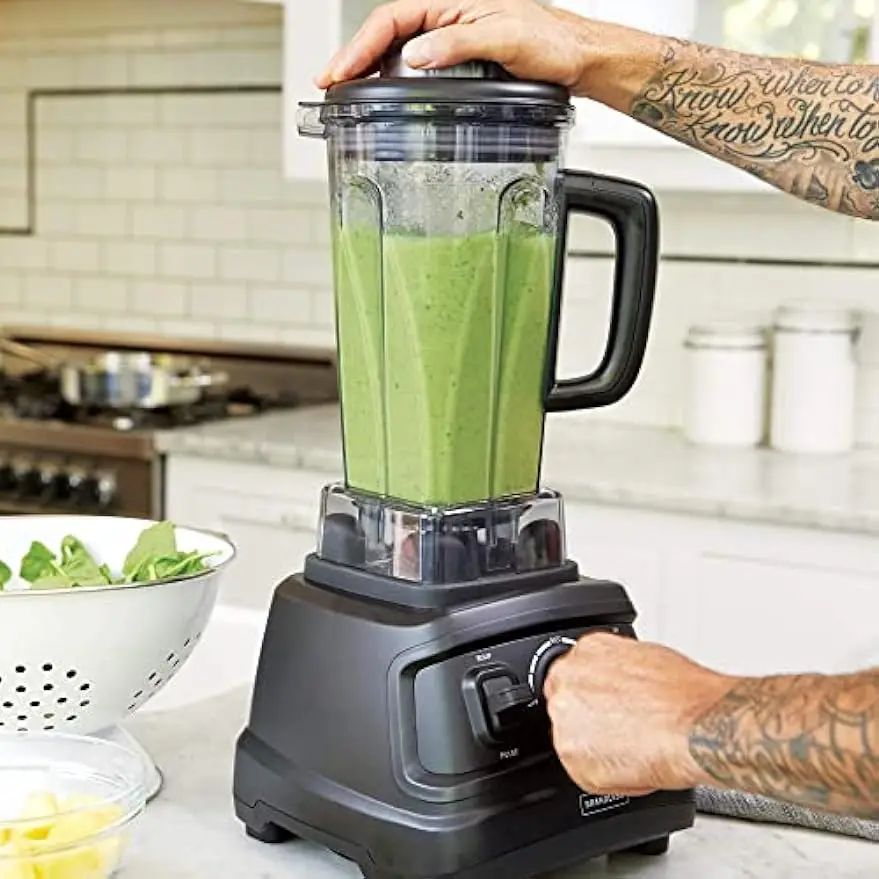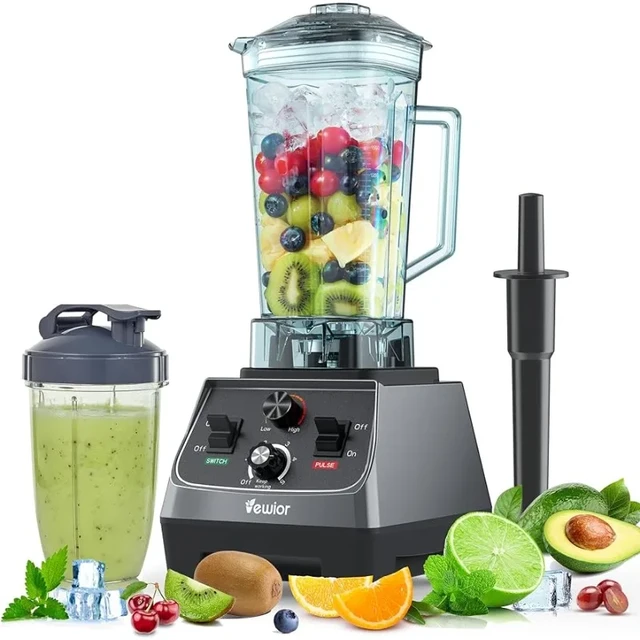
Homemade hummus is a nutritious and delicious dip that can be easily prepared using common kitchen appliances. If you’ve ever wondered, “Can I make hummus in a blender?” the answer is a resounding yes! In this detailed guide, we’ll explore the process of making creamy, smooth hummus using a blender. From selecting ingredients to troubleshooting common issues, this guide will ensure your homemade hummus is a hit every time.

Choosing the Right Blender
Selecting a suitable blender is crucial for making smooth and creamy hummus.
Blender types
High-powered blenders, such as those made by Vitamix or Blendtec, are ideal because they have robust motors that can handle thick, dense mixtures. However, most standard blenders will also do the job if you blend in smaller batches and add extra liquid as needed.
Checking capacity
Ensure your blender’s capacity is adequate for the amount of hummus you want to make. Overfilling the blender can result in uneven blending and potential spillage.
Ensuring sharp blades
Sharp blades are essential for breaking down chickpeas into a smooth puree. Check that the blades are in good condition and replace them if necessary.
Selecting High-Quality Ingredients
Quality ingredients contribute significantly to the flavor and texture of your hummus.
Chickpeas: canned vs. dried
Canned chickpeas are convenient and require minimal preparation. Rinse them thoroughly to remove excess salt. For the best flavor and texture, consider using dried chickpeas. Soak them overnight and cook until tender before using.
Tahini
Choose high-quality tahini made from 100% sesame seeds. Stir well before using, as tahini can separate over time. Fresh, creamy tahini is key to achieving a smooth hummus.
Fresh garlic
Use fresh garlic for a potent, aromatic flavor. One to two cloves are typically sufficient, but adjust according to your preference.
Lemon juice
Freshly squeezed lemon juice provides a bright, tangy flavor that balances the richness of the tahini and chickpeas.
Olive oil
Use extra virgin olive oil for its rich, fruity flavor. This enhances the creaminess and adds a subtle depth to the hummus.
Preparing the Ingredients
Proper preparation ensures a smooth blending process and a well-balanced flavor profile.
Cooking dried chickpeas
If using dried chickpeas, soak them in water overnight. Drain and rinse, then cook in a large pot of water until tender, about 60-90 minutes. Drain and cool before using.
Peeling chickpeas
For an ultra-smooth hummus, peel the chickpeas by rubbing them between your hands or using a clean dishtowel to remove the skins. This step is optional but results in a silkier texture.
Crushing garlic
Crush the garlic cloves with the flat side of a knife before mincing. This releases more flavor and makes blending easier.
Juicing the lemon
Roll the lemon on the counter with your palm to make juicing easier. Cut in half and squeeze out the juice, discarding any seeds.
 Blending Process
Blending Process
Blending the ingredients correctly is crucial for achieving the perfect hummus consistency.
Layering ingredients
Add the tahini and lemon juice to the blender first. Blend for about 30 seconds until smooth and creamy. This step creates a whipped base that integrates well with the chickpeas.
Adding chickpeas and garlic
Next, add the drained chickpeas and minced garlic to the blender. Blend until the mixture starts to come together, stopping to scrape down the sides as needed.
Incorporating olive oil and water
While blending, slowly drizzle in the olive oil. Add cold water, one tablespoon at a time, until you reach your desired consistency. Cold water helps emulsify the mixture and makes it fluffier.
Seasoning with salt and spices
Add salt to taste and blend again. For additional flavor, consider spices like cumin, paprika, or cayenne. Blend until fully incorporated.
Troubleshooting Common Issues
Addressing common problems ensures your hummus turns out perfectly every time.
Too thick or chunky
If the hummus is too thick or chunky, add more cold water or olive oil in small increments while blending. Scrape down the sides frequently to ensure even blending.
Bitter taste
Overly bitter hummus can result from over-processing tahini or using old chickpeas. To counteract bitterness, add a bit more lemon juice or a pinch of sugar.
Grainy texture
A grainy texture often means the chickpeas weren’t cooked enough or the skins weren’t removed. blending for a longer time and adding more liquid can help smooth it out.
Flavor Variations
Experiment with different flavors to customize your hummus.
Roasted red pepper
Add roasted red pepper to the blender for a sweet, smoky flavor. Blend until smooth, adjusting seasoning as needed.
Sun-dried tomato
Blend in chopped sun-dried tomatoes for a rich, tangy twist. This variation pairs well with Italian herbs like basil or oregano.
Spicy jalapeno
For a kick, add fresh or pickled jalapeno slices. Blend thoroughly and adjust the heat level to your preference.
Herbed hummus
Incorporate fresh herbs like parsley, cilantro, or basil for a bright, herbaceous flavor. Blend until the herbs are finely chopped.
Serving Suggestions
Pairing your hummus with the right accompaniments enhances the dining experience.
Classic pairings
Serve hummus with pita bread, vegetable sticks, or crackers for a classic and satisfying snack or appetizer.
Creative uses
Use hummus as a spread for sandwiches, wraps, or toast. It’s also an excellent base for grain bowls or as a topping for grilled meats and vegetables.
Garnishing ideas
Garnish your hummus with a drizzle of olive oil, a sprinkle of paprika, chopped parsley, or whole chickpeas. These additions add visual appeal and enhance flavor.
Storing and Preserving
Proper storage keeps your hummus fresh and flavorful for more extended periods.
Refrigeration
Store homemade hummus in an airtight container in the refrigerator for up to one week. The flavors meld and improve over time.
Freezing
For longer storage, hummus can be frozen. Use a freezer-safe container, leaving some space for expansion. Thaw in the refrigerator and stir well before serving.
Health Benefits
Hummus is not only delicious but also offers numerous health benefits.
Nutrient-rich
Hummus provides protein, fiber, healthy fats, and essential vitamins and minerals, making it a nutritious addition to any diet.
Heart-healthy
The combination of chickpeas and olive oil promotes heart health by reducing cholesterol levels and supporting overall cardiovascular function.
Digestive support
The fiber content in hummus aids digestion and supports a healthy gut. Incorporating it into your diet can help maintain regular bowel movements.
 Eco-Friendly and Economical
Eco-Friendly and Economical
Making hummus at home is not only cost-effective but also environmentally friendly.
Reducing waste
Homemade hummus reduces packaging waste associated with store-bought varieties. Using dried chickpeas further minimizes waste compared to canned options.
Cost savings
Buying the ingredients in bulk and making hummus at home is more economical than purchasing pre-made hummus. It also allows you to control the quality and quantity of ingredients used.
Cultural Significance
Hummus has a rich cultural history and importance in various cuisines worldwide.
Middle Eastern roots
Originating in the Middle East, hummus is a staple food in countries like Lebanon, Israel, and Palestine. It is often enjoyed as part of a mezze platter and holds significant cultural value.
Global popularity
Today, hummus has gained international popularity and is enjoyed worldwide. Its versatility and health benefits have made it a favorite in many kitchens.
Experimenting and Personalizing
Personalizing your hummus to suit your taste preferences can result in unique and delicious variations.
Mix-ins and toppings
Experiment with mix-ins like olives, feta cheese, or caramelized onions. Toppings such as pine nuts, sumac, or za’atar can add exciting flavors and textures.
Adjusting texture
Play with the texture by blending longer for a smoother hummus or leaving it slightly chunky for more substance. Adjust the liquid ingredients to achieve your preferred consistency.
Perfecting the Recipe
Mastering homemade hummus requires a bit of practice and experimentation.
Refining techniques
Refine your blending technique, ingredient ratios, and seasoning preferences with each batch. Document changes and adjustments to perfect the recipe to your liking.
Receiving feedback
Share your hummus with friends and family to receive feedback. This can help you identify areas for improvement and discover new flavor combinations.
Conclusion:
Enjoy Smooth and Creamy Hummus Anytime
In conclusion, the answer to “Can I make hummus in a blender?” is a definitive yes! With high-quality ingredients, proper preparation, and the right blending techniques, you can create delicious, creamy hummus in the comfort of your kitchen. Experiment with different flavors, serve it with a variety of accompaniments, and enjoy the numerous health benefits of this nutritious dip. By mastering the process and personalizing the recipe to your taste, you can enjoy fresh, homemade hummus anytime. Embrace the journey of making your own hummus and delight in the satisfaction of creating a beloved culinary staple.